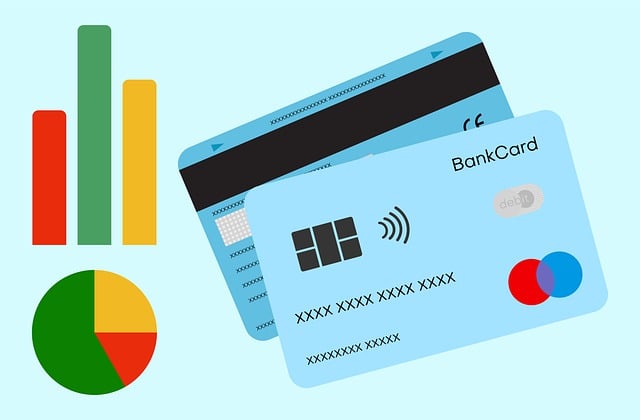Equipment loan agreements are structured around financial criteria—including collateral, borrower eligibility, repayment terms, interest rates, and debt-to-equity ratios—that safeguard lenders' interests while providing borrowers with access to capital. Lenders assess creditworthiness through both qualitative (business plans, industry trends) and quantitative (financial statements, cash flow projections) analyses. Clear agreement terms, based on thorough financial evaluations and adherence to legal regulations, foster a balanced relationship between parties. Effective dispute resolution mechanisms, such as mediation and arbitration, further ensure fairness while repossession rights act as security for loan agreements.
Equipment loan agreements are a crucial aspect of financing for businesses acquiring machinery and technology. This article delves into the intricate details of these agreements, guiding readers through the key components and legal framework governing them. We explore essential financial criteria for evaluating loan requests, ensuring creditworthiness assessments that mitigate risk. Additionally, we scrutinize legal considerations during contract drafting and review, highlighting rights and obligations for lenders and borrowers. The piece concludes by illuminating dispute resolution mechanisms within equipment loan agreements, emphasizing the importance of clear, enforceable terms, especially in today’s dynamic business landscape.
- Understanding Equipment Loan Agreements: Key Components and Legal Framework
- Financial Criteria for Evaluating Loan Requests: Assessing Creditworthiness
- Legal Considerations When Drafting and Reviewing Loan Contracts
- Rights and Obligations of Lenders and Borrowers: A Balancing Act
- Dispute Resolution and Enforcement Mechanisms in Equipment Loan Agreements
Understanding Equipment Loan Agreements: Key Components and Legal Framework

Equipment loan agreements are a crucial aspect of securing financial support for businesses and individuals in need of specialized equipment. These agreements, governed by a comprehensive legal framework, establish the terms and conditions under which lenders provide funding to borrowers for purchasing or leasing equipment. Understanding the key components is essential for both parties involved to ensure a mutually beneficial transaction.
The primary elements of an equipment loan agreement include the description of the equipment being financed, the loan amount, interest rates, repayment schedules, and financial criteria such as collateral requirements and borrower eligibility. Lenders assess these factors to mitigate risk and determine the terms offered. A solid legal framework ensures transparency, protects the rights of lenders and borrowers, and provides a clear path for resolving any disputes that may arise during the loan period.
Financial Criteria for Evaluating Loan Requests: Assessing Creditworthiness

When evaluating loan requests for equipment financing, establishing robust financial criteria is paramount to assess creditworthiness. This involves scrutinizing an applicant’s financial statements, including income, cash flow projections, and debt-to-equity ratios. By delving into these metrics, lenders can gauge the borrower’s ability to repay the loan, manage cash flows during the loan term, and maintain a sustainable financial position.
Creditworthiness determination should consider both qualitative and quantitative factors. Qualitative assessments involve evaluating business plans, industry trends, and management experience to understand the underlying risk. Quantitative analyses, on the other hand, rely on numerical data from financial statements to assess repayment capacity and overall financial health. This comprehensive approach ensures that loan decisions are informed by solid financial criteria, aligning with best practices in equipment loan agreements.
Legal Considerations When Drafting and Reviewing Loan Contracts

When drafting and reviewing equipment loan agreements, it’s crucial to consider various legal aspects to ensure fairness and protection for all parties involved. One key area is defining clear financial criteria. This includes outlining the terms of repayment, interest rates, late fees, and any collateral requirements. Financial criteria should be detailed and specific to avoid misunderstandings or disputes later on. For instance, specifying the loan amount, repayment schedule, and applicable interest rates ensures that both the lender and borrower have a mutually agreed-upon framework for the transaction.
Additionally, legal considerations involve scrutinizing the borrower’s creditworthiness and capacity to repay. Lenders should assess financial statements, business plans, and any relevant historical data to gauge the borrower’s ability to meet their obligations. This process helps mitigate risks associated with default or late payments. Reviewing existing laws and regulations related to equipment financing is also essential, as different jurisdictions may have specific requirements for loan agreements, including disclosure standards and consumer protection rules that must be adhered to.
Rights and Obligations of Lenders and Borrowers: A Balancing Act

In equipment loan agreements, a delicate balance exists between the rights and obligations of lenders and borrowers. Lenders, providing financial support based on specific financial criteria, hold the power to grant or deny loans and possess the right to repossess equipment if repayment terms are not met. Borrowers, on the other hand, have the privilege to access capital for business growth, but they are also responsible for timely payments and maintaining the equipment in good condition.
This arrangement demands borrowers be proactive in managing their finances to adhere to loan conditions. Failure to meet financial obligations can result in legal repercussions, including interest rate increases, penalty fees, and, ultimately, repossession of the equipment. Therefore, a solid understanding of financial criteria and responsible borrowing practices is essential for both parties to ensure a mutually beneficial arrangement.
Dispute Resolution and Enforcement Mechanisms in Equipment Loan Agreements

In equipment loan agreements, dispute resolution and enforcement mechanisms are critical components that safeguard the interests of both lenders and borrowers. These provisions outline the steps to be taken when disagreements arise, ensuring a structured and fair process for resolving conflicts. Many agreements incorporate mediation as an initial step, where parties attempt to reach a mutually agreeable solution with the help of a neutral third party. If mediation fails, arbitration is often the next resort, providing a more formal and binding decision-making process.
The choice of dispute resolution methods should align with the financial criteria and nature of the equipment being loaned. For instance, complex industrial machinery loans might require specialized arbitral tribunals with expertise in technical matters. Effective enforcement mechanisms also include security measures such as liens and repossession rights, enabling lenders to safeguard their assets in case of default. These mechanisms ensure that borrowers fulfill their obligations, maintaining the integrity of the loan agreement and promoting a robust lending environment.
